What are vitamins and minerals
 Why do we need supplements in some situations?
Why do we need supplements in some situations?
We humans depend on an array of different nutrients in order to thrive and be able to prevent various diseases. However, even with a healthy and balanced diet there may be circumstances that call for the use of supplements:
- Depleted soil typically lacks minerals and trace elements
- The process of refining, boiling, frying, and exposing food to other types of thorough preparation reduces its content of many different nutrients
- In our part of the world, we are unable to synthesise vitamin D from sunlight during the winter period
- Environmental pollution, stimulant abuse, and the use of medicine challenges the body's immune defence and cleansing organs
- Stress, pregnancy, lactation, age, disease, and high-performance sports activities often increase the need for a number of different nutrients








 Pure vitamin A (retinol) is a lipid-soluble vitamin. It is primarily found in animal sources that contain fat. Vegetable sources contain a lipid-soluble precursor of vitamin A called beta-carotene. Pure vitamin A is primarily stored in the liver and in fatty tissue, for which reason we do not need a daily supply of the nutrient. Vitamin A and zinc work together. A deficiency in one nutrient will therefore affect the other. On a global scale, vitamin A deficiencies are widespread. In Western countries vitamin A deficiency is normally seen in connection with chronic disease. Vitamin A is destroyed when exposed to oxygen or heat, for instance during cooking.
Pure vitamin A (retinol) is a lipid-soluble vitamin. It is primarily found in animal sources that contain fat. Vegetable sources contain a lipid-soluble precursor of vitamin A called beta-carotene. Pure vitamin A is primarily stored in the liver and in fatty tissue, for which reason we do not need a daily supply of the nutrient. Vitamin A and zinc work together. A deficiency in one nutrient will therefore affect the other. On a global scale, vitamin A deficiencies are widespread. In Western countries vitamin A deficiency is normally seen in connection with chronic disease. Vitamin A is destroyed when exposed to oxygen or heat, for instance during cooking. B vitamins are water-soluble and because they do not get stored in the body, we humans depend on regular intake of them. B vitamins work in synergy in a highly complicated teamwork setup. They take part in most of the body's enzymatic processes, some more actively than others. The uptake of B vitamins depends on gastric acid and digestion.
B vitamins are water-soluble and because they do not get stored in the body, we humans depend on regular intake of them. B vitamins work in synergy in a highly complicated teamwork setup. They take part in most of the body's enzymatic processes, some more actively than others. The uptake of B vitamins depends on gastric acid and digestion. Vitamin B1 is water-soluble and because it does not get stored in the body we depend on regular intake of the nutrient. In the 1920s, the Japanese scientist Umetaro Suzuki discovered vitamin B1 in rice shells and observed that this nutrient counteracted the classic deficiency symptom beriberi. Vitamin B1 is destroyed by alkaline substances and heating but not by freezing
Vitamin B1 is water-soluble and because it does not get stored in the body we depend on regular intake of the nutrient. In the 1920s, the Japanese scientist Umetaro Suzuki discovered vitamin B1 in rice shells and observed that this nutrient counteracted the classic deficiency symptom beriberi. Vitamin B1 is destroyed by alkaline substances and heating but not by freezing Vitamin B2 is water-soluble and because it does not get stored in the body we depend on regular intake of the nutrient. Vitamin B2 is also known as lactoflavin and is used as a yellow colouring agent/additive in various foods. When ingested in very large quantities vitamin B2 causes the urine to turn highly yellow. Vitamin B2 is destroyed by light, heating, and alcohol.
Vitamin B2 is water-soluble and because it does not get stored in the body we depend on regular intake of the nutrient. Vitamin B2 is also known as lactoflavin and is used as a yellow colouring agent/additive in various foods. When ingested in very large quantities vitamin B2 causes the urine to turn highly yellow. Vitamin B2 is destroyed by light, heating, and alcohol.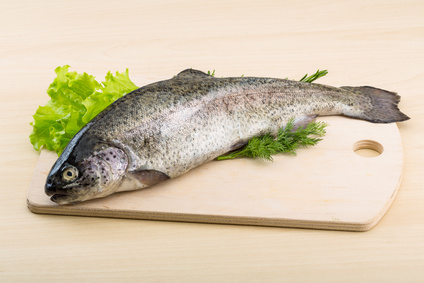 Vitamin B3 is water-soluble and because it does not get stored in the body we depend on regular intake of the nutrient. Niacin is a common term for nicotinic acid and nicotinamide. The body's metabolism is able to synthesise part of its required niacin from vitamin B6 and tryptophan, an amino acid which is primarily found in meat. Vitamin B3 is destroyed by heating.
Vitamin B3 is water-soluble and because it does not get stored in the body we depend on regular intake of the nutrient. Niacin is a common term for nicotinic acid and nicotinamide. The body's metabolism is able to synthesise part of its required niacin from vitamin B6 and tryptophan, an amino acid which is primarily found in meat. Vitamin B3 is destroyed by heating.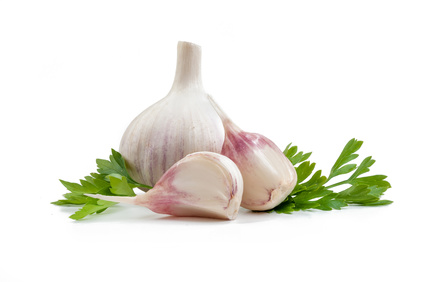 Vitamin B6, also known as pyridoxine, is converted to the active forms, pyridoxal phosphate and pyridoxamine phosphate. Vitamin B6 is water-soluble and because it does not get stored in the body we depend on regular intake of the nutrient. Vitamin B6 is destroyed by heating and light.
Vitamin B6, also known as pyridoxine, is converted to the active forms, pyridoxal phosphate and pyridoxamine phosphate. Vitamin B6 is water-soluble and because it does not get stored in the body we depend on regular intake of the nutrient. Vitamin B6 is destroyed by heating and light. The most common term for this nutrient is folic acid, whereas vitamin B9 is hardly ever used. Folic acid is the synthetic form that is found in vitamin pills, while folate and folacin are the forms of the nutrient that are found naturally in food. Folic acid is very stable and gets converted into folate in the body. The vitamin is water-soluble. Most of it gets stored in the liver, which contains around half the body's total amount of folate. The nutrient is destroyed by boiling and heating.
The most common term for this nutrient is folic acid, whereas vitamin B9 is hardly ever used. Folic acid is the synthetic form that is found in vitamin pills, while folate and folacin are the forms of the nutrient that are found naturally in food. Folic acid is very stable and gets converted into folate in the body. The vitamin is water-soluble. Most of it gets stored in the liver, which contains around half the body's total amount of folate. The nutrient is destroyed by boiling and heating. Vitamin B12 is a common term for a group of chemically related substances that all have vitamin activity. They are also known as cobalamins. The biosynthesis of the basic structure is handled by bacteria that are found many places in nature. The uptake of vitamin B12 from food requires the presence of the protein intrinsic factor that is formed in the gastric mucosa. Intrinsic factor binds to vitamin B12 and transports it into the body from the small intestine. Coli bacteria in the colon also produce vitamin B12 that is taken up by the body. Vitamin B12 is stored in the liver for up to several months at a time, and we humans are also able to reuse vitamin B12 that has been absorbed from the intestine. It is generally more difficult for the body to absorb vitamin B12 compared with other vitamins, and our ability to take up the nutrient decreases as we grow older. The synthetic basic form of vitamin B12 is used in nutritional supplements and also as a food additive. The dosages are typically rather large in order to ensure sufficient uptake of the nutrient.
Vitamin B12 is a common term for a group of chemically related substances that all have vitamin activity. They are also known as cobalamins. The biosynthesis of the basic structure is handled by bacteria that are found many places in nature. The uptake of vitamin B12 from food requires the presence of the protein intrinsic factor that is formed in the gastric mucosa. Intrinsic factor binds to vitamin B12 and transports it into the body from the small intestine. Coli bacteria in the colon also produce vitamin B12 that is taken up by the body. Vitamin B12 is stored in the liver for up to several months at a time, and we humans are also able to reuse vitamin B12 that has been absorbed from the intestine. It is generally more difficult for the body to absorb vitamin B12 compared with other vitamins, and our ability to take up the nutrient decreases as we grow older. The synthetic basic form of vitamin B12 is used in nutritional supplements and also as a food additive. The dosages are typically rather large in order to ensure sufficient uptake of the nutrient.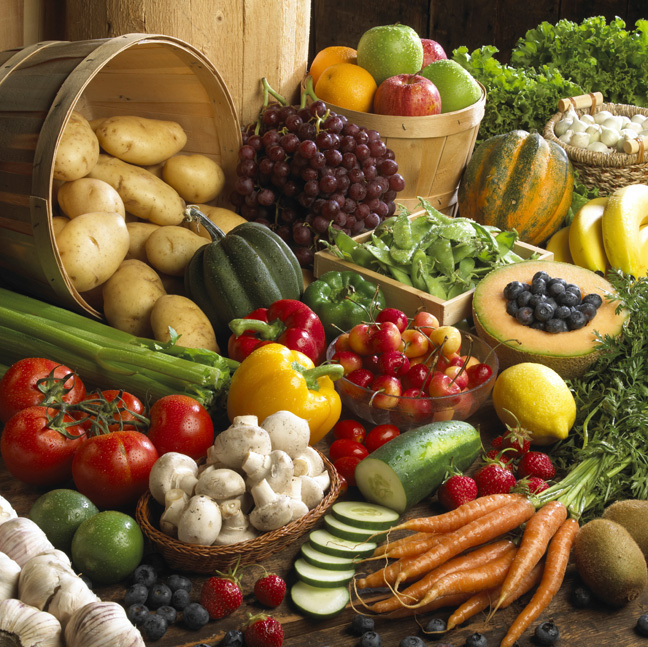 Vitamin C is also known as ascorbic acid and L-ascorbic acid. Most animals are able to synthesise vitamin C by means of a stepwise, enzymatic conversion of glucose (dextrose). However, humans, apes, guinea pigs, and certain other animals have lost this ability during evolution. The largest concentrations of vitamin C are found in the white cells of the immune defence, the pancreas, the testicles, and the ovaries. Vitamin C is water-soluble and as it is not stored in the body, we depend on regular intake of the nutrient. Vitamin C is destroyed by light, heat, boiling, freezing, preservation, and storage (including winter storage of vegetables and fruit).
Vitamin C is also known as ascorbic acid and L-ascorbic acid. Most animals are able to synthesise vitamin C by means of a stepwise, enzymatic conversion of glucose (dextrose). However, humans, apes, guinea pigs, and certain other animals have lost this ability during evolution. The largest concentrations of vitamin C are found in the white cells of the immune defence, the pancreas, the testicles, and the ovaries. Vitamin C is water-soluble and as it is not stored in the body, we depend on regular intake of the nutrient. Vitamin C is destroyed by light, heat, boiling, freezing, preservation, and storage (including winter storage of vegetables and fruit). There are several kinds of vitamin D with the two most important being:
There are several kinds of vitamin D with the two most important being: Vitamin was originally isolated from wheat germ oil in 1936. The nutrient is a lipid-soluble vitamin of vegetable origin that is primarily found in fatty foods. Vitamin E includes eight different compounds called tocopherols and tocotrienols. Alpha-tocopherol is considered the most important type of vitamin E for humans, as it is the most prevalent and active form of the nutrient. The largest concentrations are found in the adrenal glands, testicles, uterus, and fatty tissues. Vitamin E is destroyed by light and freezing. Oils should be stored in a dark and cool place.
Vitamin was originally isolated from wheat germ oil in 1936. The nutrient is a lipid-soluble vitamin of vegetable origin that is primarily found in fatty foods. Vitamin E includes eight different compounds called tocopherols and tocotrienols. Alpha-tocopherol is considered the most important type of vitamin E for humans, as it is the most prevalent and active form of the nutrient. The largest concentrations are found in the adrenal glands, testicles, uterus, and fatty tissues. Vitamin E is destroyed by light and freezing. Oils should be stored in a dark and cool place. Vitamin K is lipid-soluble and was discovered by the Danish professor and Nobel Prize laureate Henrik Dam. There are three different forms with different functions. Vitamin K1 is primarily found in green plants, whereas vitamin K2 is produced by bacteria, and vitamin K3 is synthetic.
Vitamin K is lipid-soluble and was discovered by the Danish professor and Nobel Prize laureate Henrik Dam. There are three different forms with different functions. Vitamin K1 is primarily found in green plants, whereas vitamin K2 is produced by bacteria, and vitamin K3 is synthetic.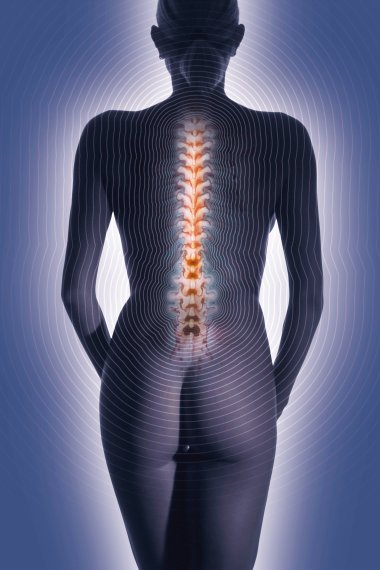 An adult contains around one kilogram of calcium, which is the most abundant mineral in the human body. Bones and teeth store around 99% of our calcium and 1 per cent is used to support metabolic functions. Levels of calcium in the blood are tightly controlled, as the slightest deviations may result in serious symptoms of the nervous system and the heart.
An adult contains around one kilogram of calcium, which is the most abundant mineral in the human body. Bones and teeth store around 99% of our calcium and 1 per cent is used to support metabolic functions. Levels of calcium in the blood are tightly controlled, as the slightest deviations may result in serious symptoms of the nervous system and the heart.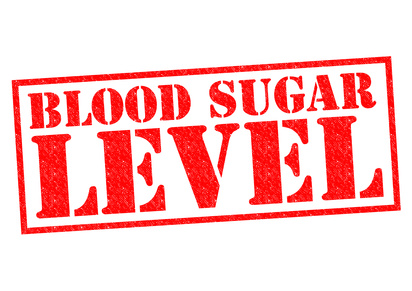 The mineral chromium is found in various forms. Hexavalent chromium is used for industrial purposes such as chrome plating, tanning of hides, dyes, wood protection etc. This form of chromium is toxic and may cause contact dermatitis and certain cancer forms. Trivalent chromium, on the other hand, is found in biological matter such as plants and animals and is an essential nutrient. As the body's need for chromium is rather small, this nutrient is characterised as a trace element. The body stores around 4-6 mg of chromium.
The mineral chromium is found in various forms. Hexavalent chromium is used for industrial purposes such as chrome plating, tanning of hides, dyes, wood protection etc. This form of chromium is toxic and may cause contact dermatitis and certain cancer forms. Trivalent chromium, on the other hand, is found in biological matter such as plants and animals and is an essential nutrient. As the body's need for chromium is rather small, this nutrient is characterised as a trace element. The body stores around 4-6 mg of chromium.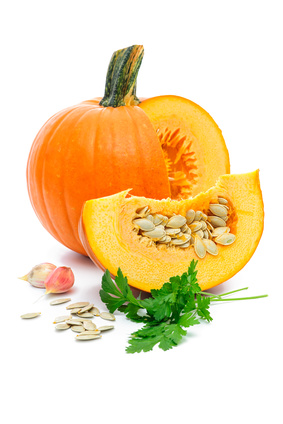 An adult person contains around 800-1,200 grams of phosphor. Together with calcium, phosphor is one of the most abundant minerals in the human body and it is vital to maintain the proper balance. About 90 per cent of the body's phosphor is found in our bones and teeth. Phosphor is also an active element of many biochemical processes and even functions as the chemical compound phosphate. Phosphor is regulated in the same way as calcium where vitamin D supports the uptake from the digestive channel, a parathyroid hormone regulates the blood content of the mineral, the kidneys control the excretion, and the bones function as a storage facility.
An adult person contains around 800-1,200 grams of phosphor. Together with calcium, phosphor is one of the most abundant minerals in the human body and it is vital to maintain the proper balance. About 90 per cent of the body's phosphor is found in our bones and teeth. Phosphor is also an active element of many biochemical processes and even functions as the chemical compound phosphate. Phosphor is regulated in the same way as calcium where vitamin D supports the uptake from the digestive channel, a parathyroid hormone regulates the blood content of the mineral, the kidneys control the excretion, and the bones function as a storage facility.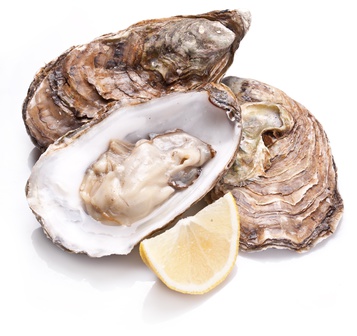 Copper is an essential trace element. An adult contains around 100-150 micrograms of copper. Most of it is found in the liver, brain, kidneys, and heart. Fetuses and newborn babies have particularly high copper levels in their liver. In fact, the liver is believed to serve as an extra storage facility during lactation where the copper content in breastmilk is rather low.
Copper is an essential trace element. An adult contains around 100-150 micrograms of copper. Most of it is found in the liver, brain, kidneys, and heart. Fetuses and newborn babies have particularly high copper levels in their liver. In fact, the liver is believed to serve as an extra storage facility during lactation where the copper content in breastmilk is rather low. Magnesium is an essential mineral. An adult contains around 20-30 grams of magnesium. Approximately half of the body's magnesium supply is stored in the bones. The rest is distributed in the muscles, liver, nerve tissue and other soft tissues. Magnesium is mainly found inside the cells where it supports over 300 different enzymatic processes.
Magnesium is an essential mineral. An adult contains around 20-30 grams of magnesium. Approximately half of the body's magnesium supply is stored in the bones. The rest is distributed in the muscles, liver, nerve tissue and other soft tissues. Magnesium is mainly found inside the cells where it supports over 300 different enzymatic processes. Selenium is a trace element that is found in all the cells of the body. An adult contains around 10-15 mg of selenium with the largest concentrations being found in the liver, kidneys, thyroid gland, sexual gland (gonads), and semen. Selenium supports over 30 different selenoproteins that have a number of different functions. Among these are five glutathione peroxidases (GSH-Px) that function as antioxidants, and three deiodinases that regulate the metabolism. Of all minerals, selenium is the one that holds the greatest antioxidant potential. It works in close collaboration with vitamin E to prevent oxidative damage to cell membranes, lipids, and DNA. Selenium and sulfur bear great chemical resemblances, but sulfur is not an antioxidant and has other functions in the body.
Selenium is a trace element that is found in all the cells of the body. An adult contains around 10-15 mg of selenium with the largest concentrations being found in the liver, kidneys, thyroid gland, sexual gland (gonads), and semen. Selenium supports over 30 different selenoproteins that have a number of different functions. Among these are five glutathione peroxidases (GSH-Px) that function as antioxidants, and three deiodinases that regulate the metabolism. Of all minerals, selenium is the one that holds the greatest antioxidant potential. It works in close collaboration with vitamin E to prevent oxidative damage to cell membranes, lipids, and DNA. Selenium and sulfur bear great chemical resemblances, but sulfur is not an antioxidant and has other functions in the body. Sulphur is essential for plants and animals. An adult contains around 175 grams of sulphur. The nutrient is found in the amino acids cysteine and methionine and is therefore also present in all the proteins and enzymes that contain these amino acids. Sulphur is a component of those enzymes that are responsible for ensuring that the hemoglobin in red blood cells is able to bind oxygen. Sulphur is also a component of the disulfide bonds that give strength to skin, hair, and nails. The reason why bird eggs have such a high sulphur content is that the nutrient is needed for the plumage of the developing bird. Sulphur is able to bind heavy metals and other toxins. Sulphur is chemically similar to selenium, but sulphur is not an antioxidant and has other functions in the body.
Sulphur is essential for plants and animals. An adult contains around 175 grams of sulphur. The nutrient is found in the amino acids cysteine and methionine and is therefore also present in all the proteins and enzymes that contain these amino acids. Sulphur is a component of those enzymes that are responsible for ensuring that the hemoglobin in red blood cells is able to bind oxygen. Sulphur is also a component of the disulfide bonds that give strength to skin, hair, and nails. The reason why bird eggs have such a high sulphur content is that the nutrient is needed for the plumage of the developing bird. Sulphur is able to bind heavy metals and other toxins. Sulphur is chemically similar to selenium, but sulphur is not an antioxidant and has other functions in the body. Zinc is a trace element that is found in all cells and body fluids. Zinc is essential for normal functioning of around 200 different enzymes that control growth, metabolism, the nervous system, the immune function, and a variety of other functions. Most of our zinc is found in muscle tissue and bone tissue and there is a rather large zinc concentration in the prostate gland and in the choroidal membrane of the eye. Around 11% of our zinc is found in the skin and liver. An adult contains 2-4 grams of zinc. We are only able to absorb 10-30% of the zinc that we get from our diet, and there are several factors that can either increase or decrease zinc absorption.
Zinc is a trace element that is found in all cells and body fluids. Zinc is essential for normal functioning of around 200 different enzymes that control growth, metabolism, the nervous system, the immune function, and a variety of other functions. Most of our zinc is found in muscle tissue and bone tissue and there is a rather large zinc concentration in the prostate gland and in the choroidal membrane of the eye. Around 11% of our zinc is found in the skin and liver. An adult contains 2-4 grams of zinc. We are only able to absorb 10-30% of the zinc that we get from our diet, and there are several factors that can either increase or decrease zinc absorption. Q10 is a lipid-soluble coenzyme that is found in all the body's cells, except for the red blood cells. Carbohydrate, fat, and protein get converted into energy by means of Q10 and the oxygen we breathe. This process takes place inside the small, cellular power stations called mitochondria. To begin with, Q10 contributes to storing the energy in a chemical form called ATP (adenosine triphosphate). After that, Q10 makes sure that the energy is released in step with the shifting energy requirement of the cells.
Q10 is a lipid-soluble coenzyme that is found in all the body's cells, except for the red blood cells. Carbohydrate, fat, and protein get converted into energy by means of Q10 and the oxygen we breathe. This process takes place inside the small, cellular power stations called mitochondria. To begin with, Q10 contributes to storing the energy in a chemical form called ATP (adenosine triphosphate). After that, Q10 makes sure that the energy is released in step with the shifting energy requirement of the cells. Omega-3 fatty acids belong to a group of polyunsaturated fatty acids. Their "omega-3" name indicates that they have a double bond at the third carbon atom in the middle carbon chain. Omega-3 fatty acids provide energy and constitute an important element in all cell membranes and various biochemical processes. The type known as ALA (alpha-linoleic acid) is essential, as the human body is unable to produce it. We depend on a dietary supply of this fatty acid. By means of enzymes, ALA is converted to EPA (eicosapentaenoic acid) and DHA (docosahexaenoic acid) and finally into some hormone-like substances named prostaglandins (E3).
Omega-3 fatty acids belong to a group of polyunsaturated fatty acids. Their "omega-3" name indicates that they have a double bond at the third carbon atom in the middle carbon chain. Omega-3 fatty acids provide energy and constitute an important element in all cell membranes and various biochemical processes. The type known as ALA (alpha-linoleic acid) is essential, as the human body is unable to produce it. We depend on a dietary supply of this fatty acid. By means of enzymes, ALA is converted to EPA (eicosapentaenoic acid) and DHA (docosahexaenoic acid) and finally into some hormone-like substances named prostaglandins (E3). Lactic acid bacteria are many different types of bacteria that produce lactic acid by fermenting carbohydrate. They are widespread in the kingdom of plants and animals. Lactic acid bacteria are also called probiotics which means "pro life" and constitute a vital part of our enormous intestinal microflora that contains more bacteria than body cells and weighs around two kilos.
Lactic acid bacteria are many different types of bacteria that produce lactic acid by fermenting carbohydrate. They are widespread in the kingdom of plants and animals. Lactic acid bacteria are also called probiotics which means "pro life" and constitute a vital part of our enormous intestinal microflora that contains more bacteria than body cells and weighs around two kilos.